When making homemade hummus, canned chickpeas are easy and convenient, but if you've got the time, energy, and curiosity, try this recipe for Hummus with Dried Chickpeas.
There might be some science to starting with dried chickpeas and dry-sautéing them with baking soda that makes the resulting hummus super creamy and fluffy, but truth be told, starting with either dried chickpeas and slow-cooking them myself, or using great quality canned chickpeas didn't seem to make a difference in the texture in my own endeavors. (There is actually something else that
The reason to start with dried chickpeas is that they are less expensive, there is no question about whether the chickpeas have added preservatives, and why not?
Ingredients You Need for Homemade Hummus with Dried Chickpeas
Almost every recipe for hummus has the same few ingredients. The specific amounts and order in the directions are what make the recipes different. These are the ingredients you need for hummus:
- dried chickpeas
- tahini
- garlic
- lemon/lemon juice
- olive oil salt
- a not-so-secret ingredient, see below!
How to Get the Restaurant-style Fluffy, Creamy Hummus
The first few times I made hummus, I cobbled together bits and pieces of different hummus recipes I found on the internet. My hummus always tasted okay, spicy with garlic and tart with lemon juice, but I never got the same ultra creamy, fluffy consistency of the restaurant hummus.
I tweaked here and there trying to achieve that creamy, fluffy hummus. Adding more lemon juice made the hummus, duh, too lemony. Putting all of the ingredients in the food processor at the same time as opposed to puréeing the chickpeas first made no difference. Adding more olive oil to the hummus left it grainy and just more runny.
Then, like every good food-obsessive a few years ago, I got my hands on Yotam Ottolenghi's cookbook, Jerusalem. I made hummus following Ottolenghi's recipe in the book.
The hummus was perfect.
The simple recipe for hummus was a revelation to me. The recipe uses no olive oil, called for a lot of tahini, and added of all things, ice water.
The key here was the ice water, which seemed counter-intuitive to me. I'm no food scientist, but something about cold water at high-speed emulsifies the fat in the tahini, creating a smooth, creamy texture, not unlike the way emulsification of oil and vinegar creates a smooth and creamy salad dressing.
How to Make Homemade Hummus with Dried Chickpeas
Making hummus with dried chickpeas isn't necessarily more difficult or complicated than using canned chickpeas. It just takes more time because you have to factor in cooking time, which itself isn't that long at 20-40 minutes, but the pre-cook soaking time, which is overnight (or 12 hours). You have to know a day in advance that you want to eat hummus.
Here's how to make Hummus with Dried Chickpeas:
- soak and cook chickpeas
- pulse garlic and chickpeas until you get a thick mixture
- tahini, lemon juice, and salt to "loosen" the puree
- ice water one tablespoon at a time until fluffy
If you're more of a visual person, watch a short video of the making of the hummus here.
Ingredients Notes and Shopping Resources for Homemade Hummus
- CHICKPEAS. This hummus recipe is specific for dried chickpeas. Use any dried organic chickpeas (also called garbanzo beans). This is the same brand I use for canned chickpeas, too. If you want to make it a little easier on yourself and start with canned chickpeas, use this recipe for Classic Hummus with Canned Chickpeas, though the recipes are basically similar once the chickpeas are peeled!
- TAHINI. Tahini is a Mediterranean-based smooth puree of sesame seeds, essentially a seed butter. It adds a nutty, umami, toasted flavor to foods and a fluffy texture to hummus. I have tried and liked Artisana Organic, Joyva, Kevala Organic, Whole Foods 365 Organic and a few other brands that aren't memorable, but all of which I was able to find either online or in a regular grocery store in Los Angeles. The one I like the most is Soom, which I first saw in the little shop at Suraya restaurant in Philadelphia (photo above). If you can't find tahini, or are new to tahini and don't want to spend money on an entire jar, you can substitute with half the amount of sesame oil, or leave the tahini out (use this hummus recipe with no tahini here), with the understanding that the final hummus will be good, but will taste very different.
- KOSHER SALT. I use Diamond Crystal brand, which is in the burgundy red box.
- OLIVE OIL. The olive oil here is for garnish at the end so use your favorite. I use California Olive Ranch.
How and Where to Eat Homemade Hummus
Wait. I don't understand the question? You mean there are ways to eat Homemade Hummus other than just immediately out of the food processor with a spoon?
These are some awesome ways to serve and eat Homemade Hummus, which you can treat as a dip, spread, salad base, and it doesn't have to be considered just an appetizer:
- as a snack by itself with pita chips (here's my homemade Pita Chips recipe!)
- on the Epic Mediterranean Mezze Platter as a dip with pita bread and crudites
- spread hummus on toast like you would a nut butter
- use as the sauce base for grilled flatbread or pizza (you can make this 3-ingredient flatbread yourself in a skillet!)
- Loaded Hummus Platter as a dippable "salad," spooned onto a platter and loaded with chopped tomatoes, bell peppers, cucumbers, avocado, and red onions
Variations of Classic Homemade Hummus
Of course you've seen all the different flavored hummuses (hummi?) at the grocery store like roasted red pepper and cilantro.
Once you've gotten yourself into the rhythm of making this classic hummus, you can branch out and add ingredients like fresh or dried herbs, spices, and even other roasted or cooked vegetables for different flavors. Puree larger ingredients like roasted vegetables right along with with chickpeas. Add seasonings like herbs and spices when you add the tahini, lemon juice, and salt.
Here are a few of my favorite variations:
- Roasted Garlic Hummus. 1 full head of roasted garlic added with the chickpeas make the most insanely garlick-y Roasted Garlic Hummus ever
- Roasted Beet Hummus. 1 small chopped roasted red beet added with the chickpeas makes a bright fuschia Roasted Beet Hummus with an earthy flavor
- Avocado Hummus. half a small avocado added with the chickpeas for Avocado Hummus (you could use half lime juice for the lemon juice and add a jalapeno to make it even more interesting!)
- Olive Hummus. ¼ cup chopped olives with the tahini and lemon juice
- Green Goddess Hummus. 1 tablespoon each chopped basil chives or green onion, dill, and parsley for a bright, herbal hummus
- Sriracha Hummus. 1-2 tablespoons sriracha or other hot sauce added with the tahini and about half lemon juice
Tools and Equipment You Need to Make Homemade Hummus
- LARGE LIQUID MEASURING CUP. This larger sized measuring cup lets you measure and use a soaking bowl all in one
- MESH STRAINER. I have a set of three different sizes, and use the medium one to drain the chickpeas and give them a good shake. (The larger strainer is great for sifting flours and straining stock).
- MEDIUM SAUCEPAN. The small, 1-quart size of this stainless steel sauce pan works for this hummus recipe, and is a handy, convenient size for other recipes
- KITCHEN TOWELS. I have purchased so many "fancy" branded kitchen towels over the years, but always come back to the inexpensive, no brand 100% cotton floursack cloths because they're absorbent and actually "dry" your hands or dishes or whatever you're wiping. Regular terry-cloth style towels are absorbent, but don't dry out themselves, and traditional tea towels are thin and dry out, but are also rough on the skin. Keep fancy kitchen towels for display, get the floursack cloths for actual work.
- FOOD PROCESSOR. I have been using my small 4-cup Cuisinart FOR YEARS. I will only "upgrade" when this one falls apart because it still works like a dream, but most importantly, it's easy to clean and PUT AWAY. This 4-cup capacity is the right size for small jobs like dips and spreads.
- CITRUS JUICER. This cute citrus juicer squeezes lemons, limes, and small oranges, and the color makes it easy to find in the drawer full of kitchen gadgets
- CUTTING BOARD. This is my favorite very large cutting board that also doubles as a food/crudites/cheese board. It is very heavy.
- KNIFE. My daily, all-purpose knife, expensive, but definitely worth it
Classic Hummus Recipe with Dried Chickpeas
Ingredients
- 1¼ cups dried chickpeas
- 1 teaspoon baking soda
- 6½ cups water for cooking chickpeas
- 1 cup plus 2 tablespoons light tahini paste
- 4 tablespoons freshly squeezed lemon juice
- 4 cloves garlic crushed
- 6-8 tablespoons ice cold water
- salt
- garnishes: olive oil, whole chickpeas, and chopped parsley
Instructions
- The night before, put the chickpeas in a large bowl and cover them with cold clean, filtered water at least twice their volume. Leave to soak overnight.
- The next day, drain the chickpeas. Place a medium saucepan over high heat and add the drained chickpeas and baking soda. Cook for about three minutes, stirring constantly.
- Add water and bring to a boil. Cook, skimming off any foam and any skins that float to the surface. The chickpeas will need to cook for 20 to 40 minutes, depending on the type of chickpeas and freshness, sometimes even longer. Once done, they should be very tender, breaking up easily when pressed between your thumb and finger, almost but not quite mushy.
- Drain the chickpeas. You should have roughly 3 ⅔ cups now.
- Optional step: Peel the chickpeas of their thin skins either by gently squeezing each chickpea between your finger until the chickpea slips or pops out of the skin, or by pouring the chickpeas onto a clean dry kitchen towel or paper towel and rubbing them with another towel or paper towel to remove the skins.
- Place the chickpeas in a food processor and process until you get a stiff mixture. Then, with the machine sill running, add the tahini, lemon juice, garlic, and 1½ teaspoons salt. Finally, slowly drizzle in the ice water and allow it to mix for about five minutes, until you get a very smooth and creamy paste.
- Transfer the hummus to a bowl, cover the surface with plastic wrap, and let it rest for at least 30 minutes. If not using straightaway, refrigerate until needed. Make sure to take it out of the fridge at least 30 minutes before serving.

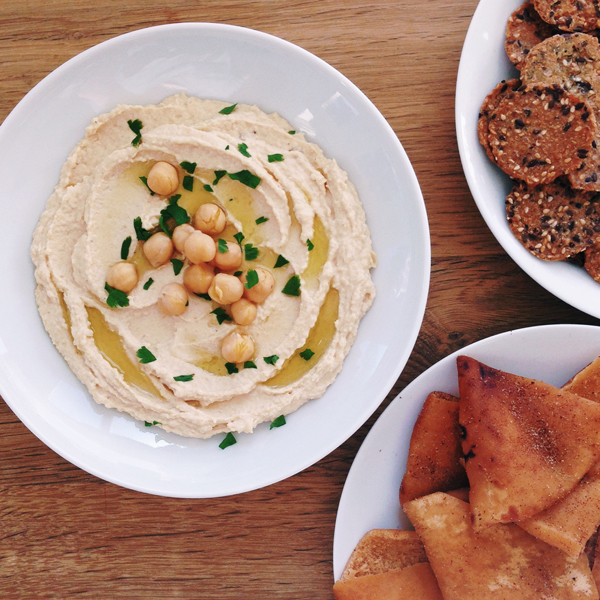

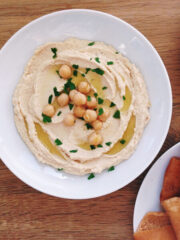
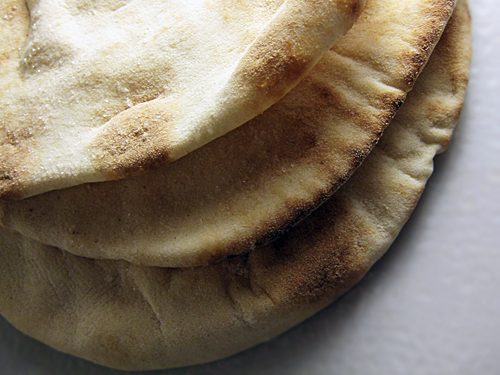
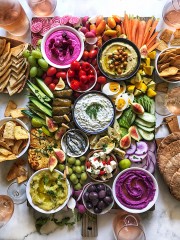
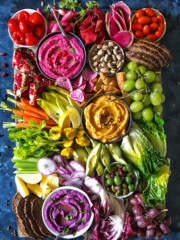
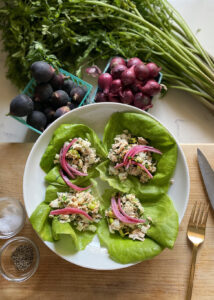
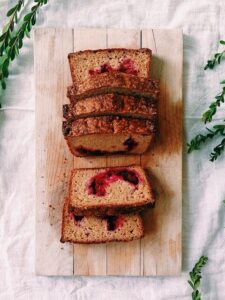
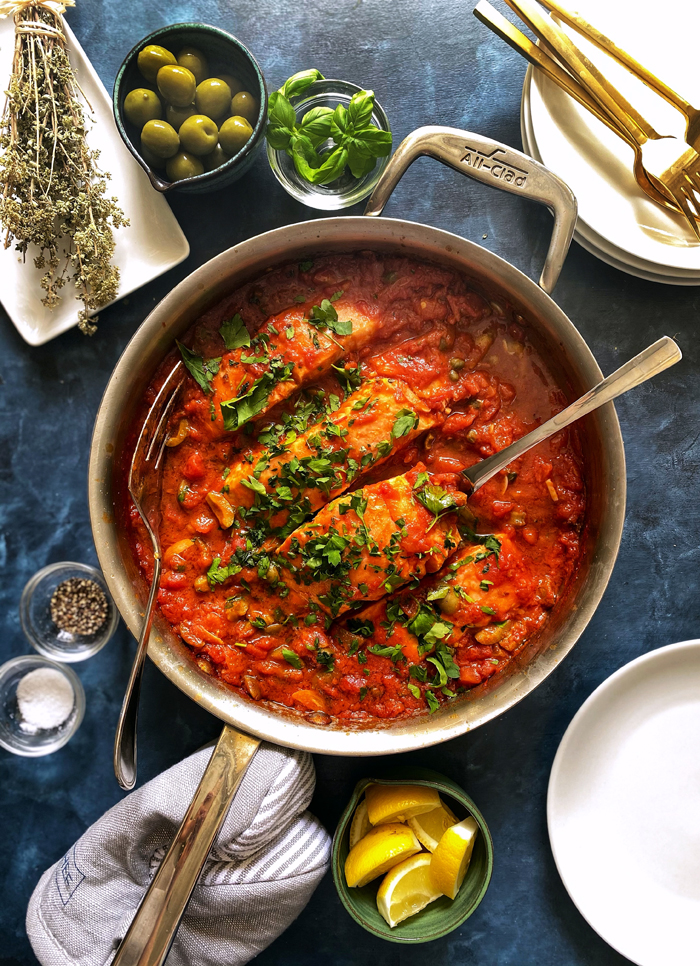
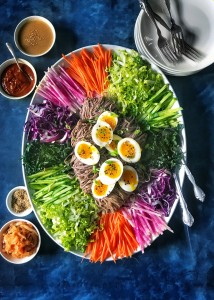
Ana-Maria says
Had hummus for breakfast just this morning. Love it! I make it the same as Ottolenghi but without peeling every chickpea. But I will try the cooking method as up until now I would just boil them in plain water. So thanks for the suggestion! Love the photo! :)
Dixya Bhattarai RD says
thank you for sharing this because I have always wondered about the consistency too.